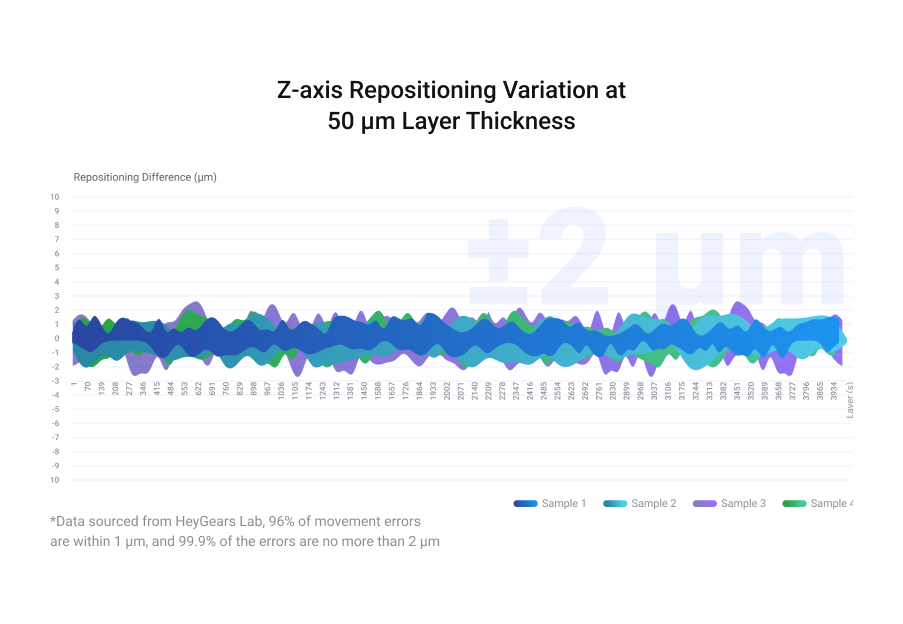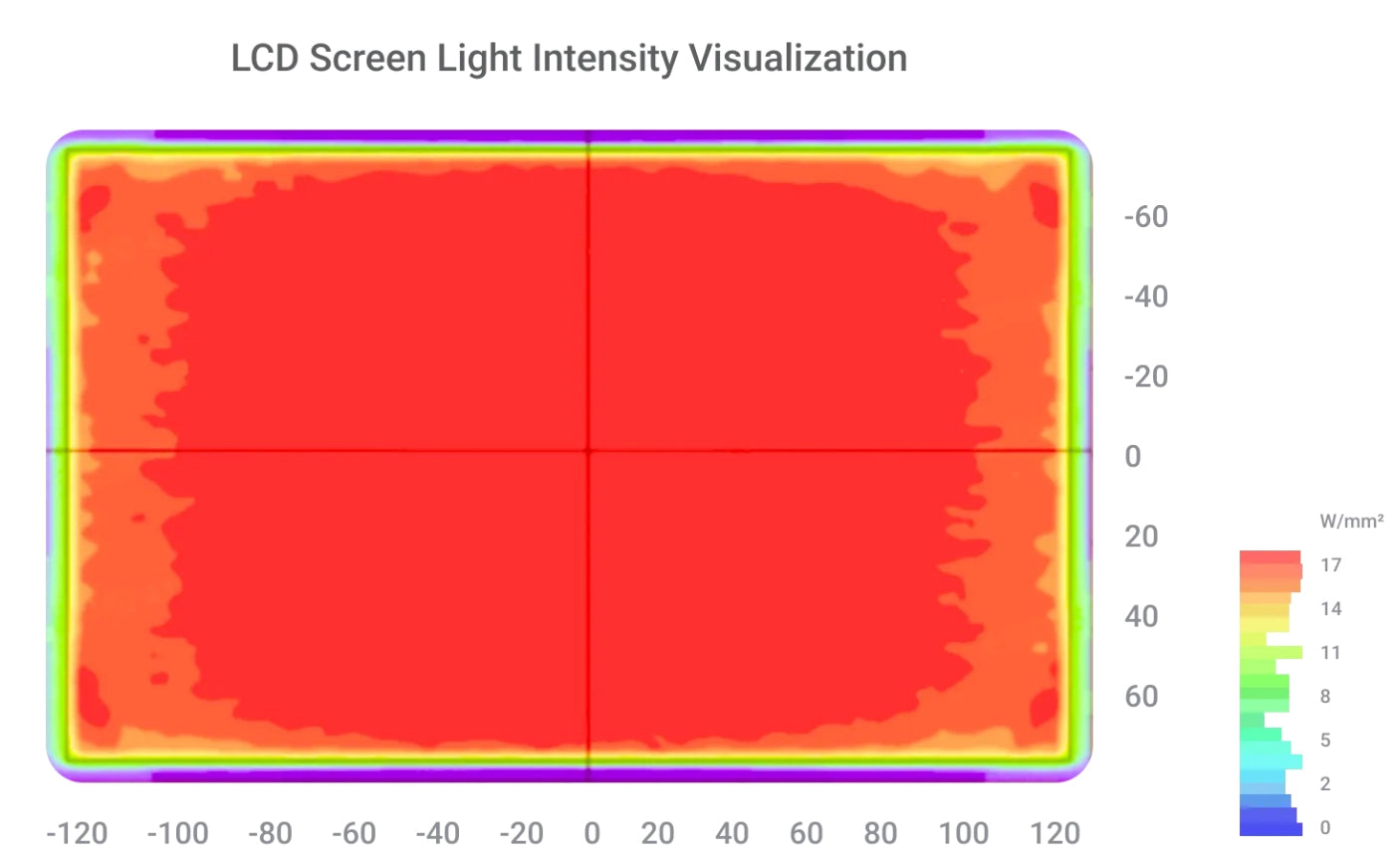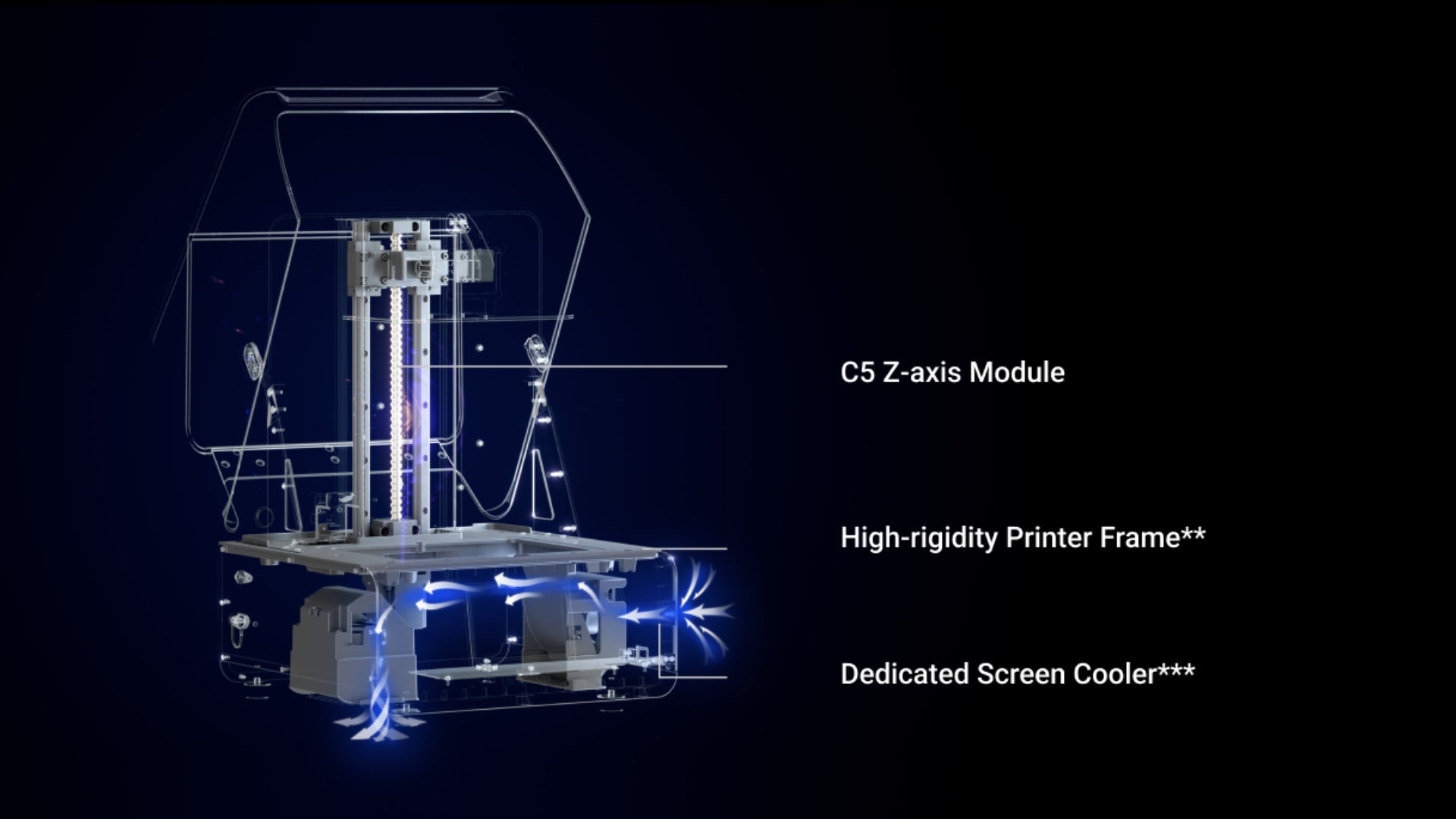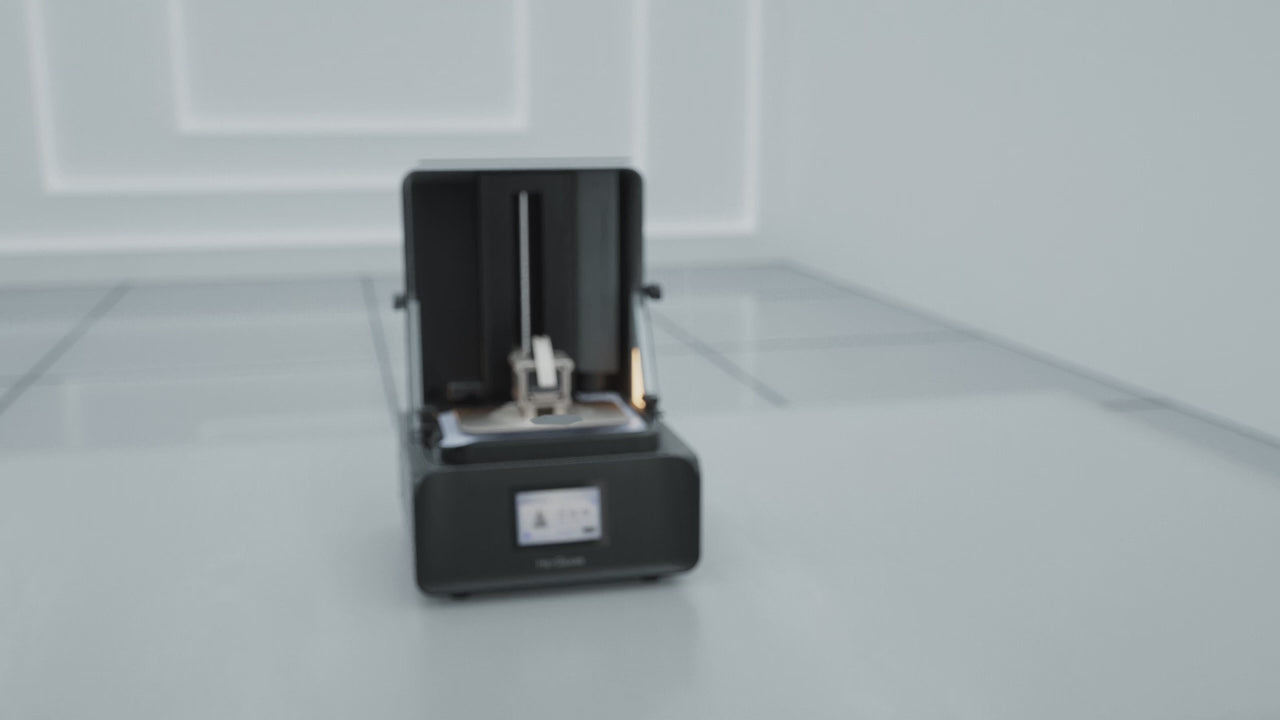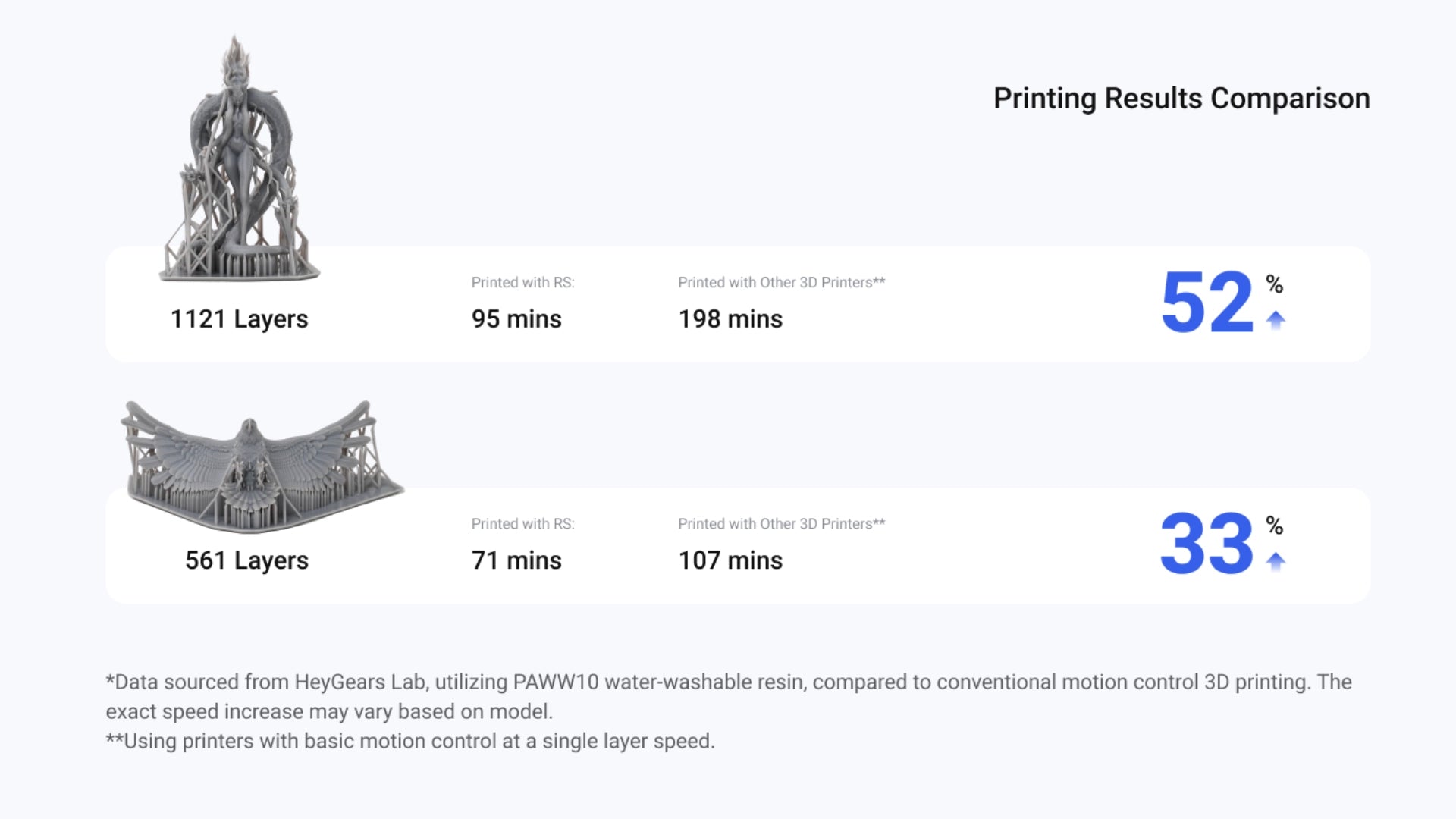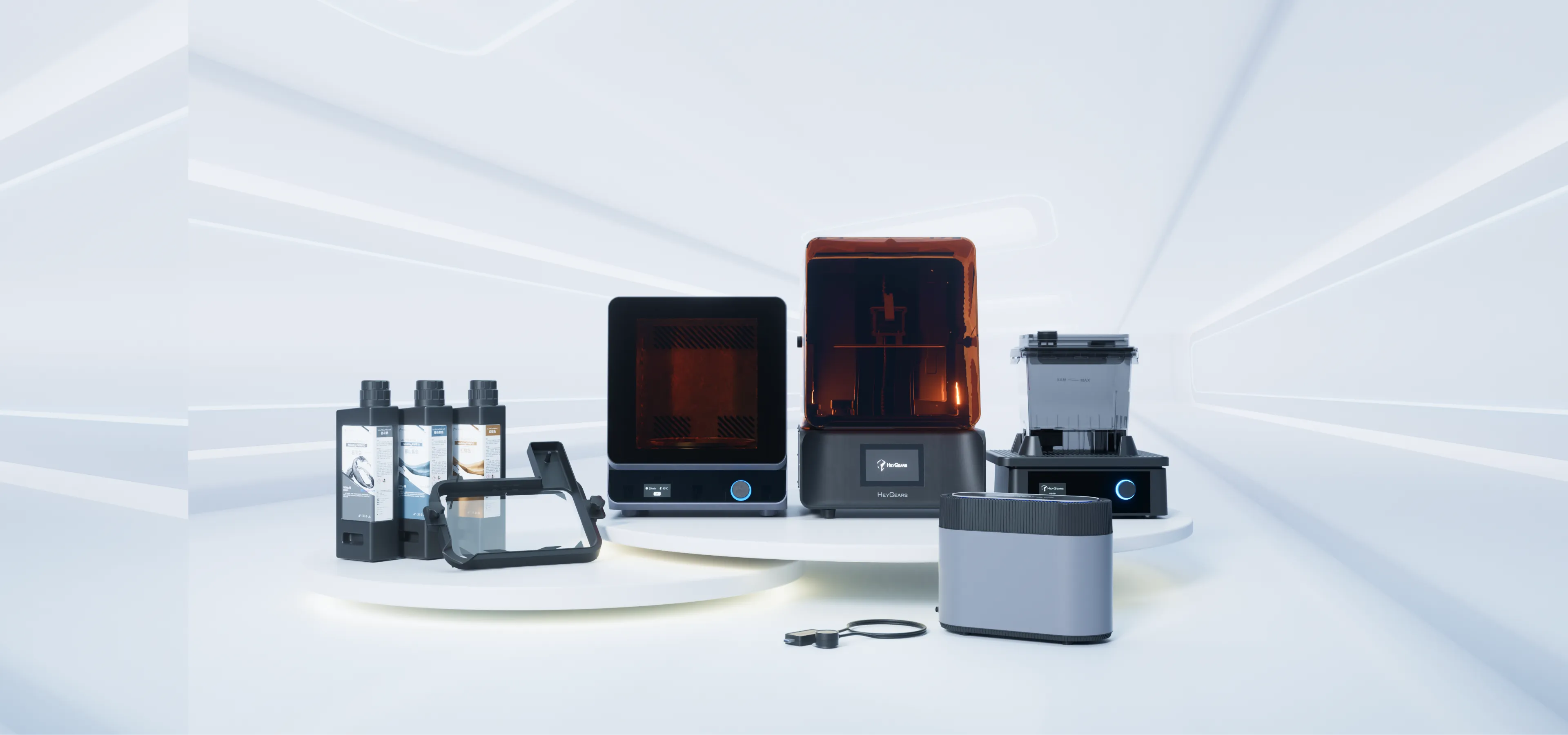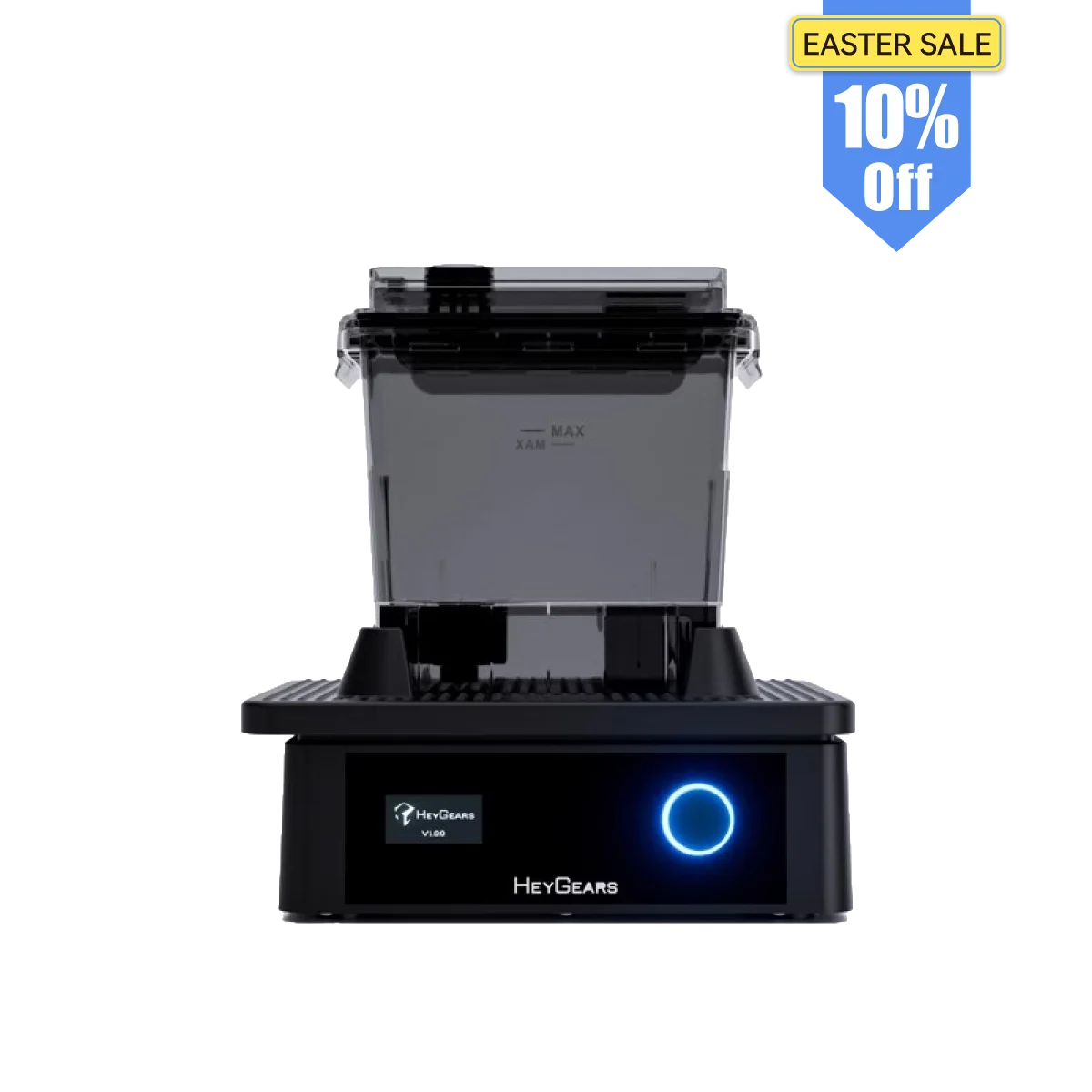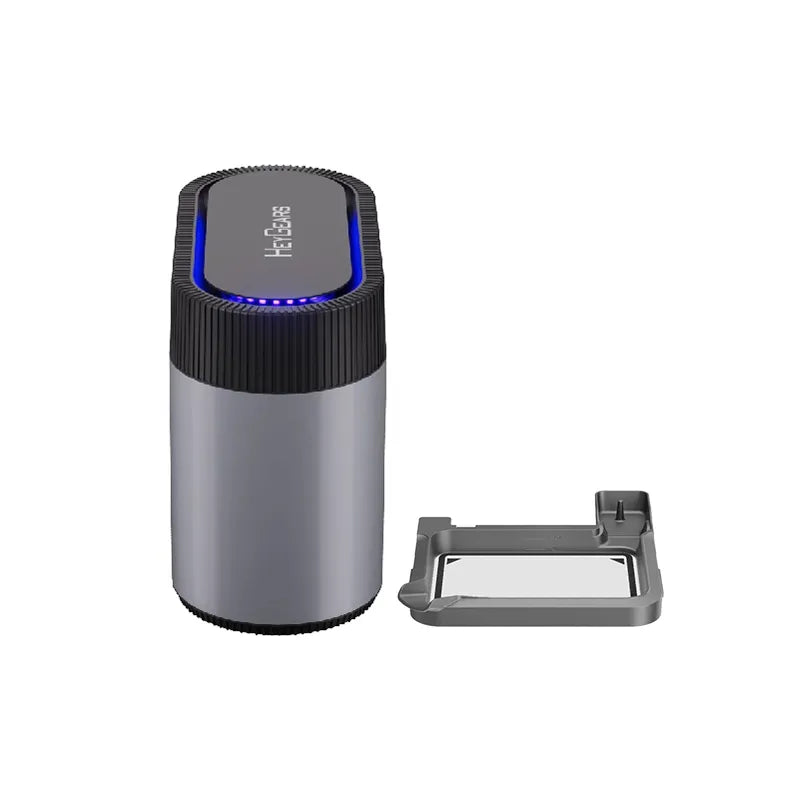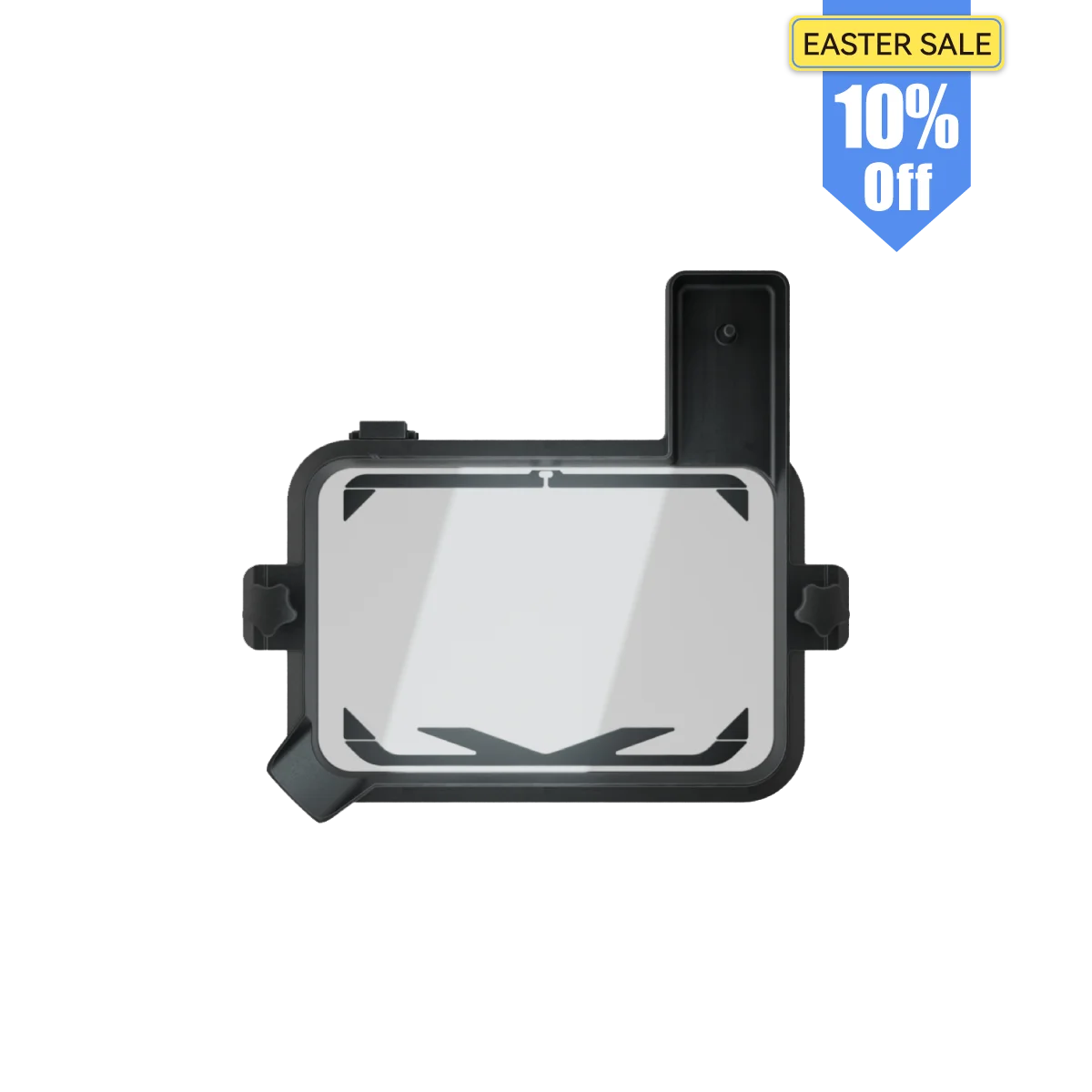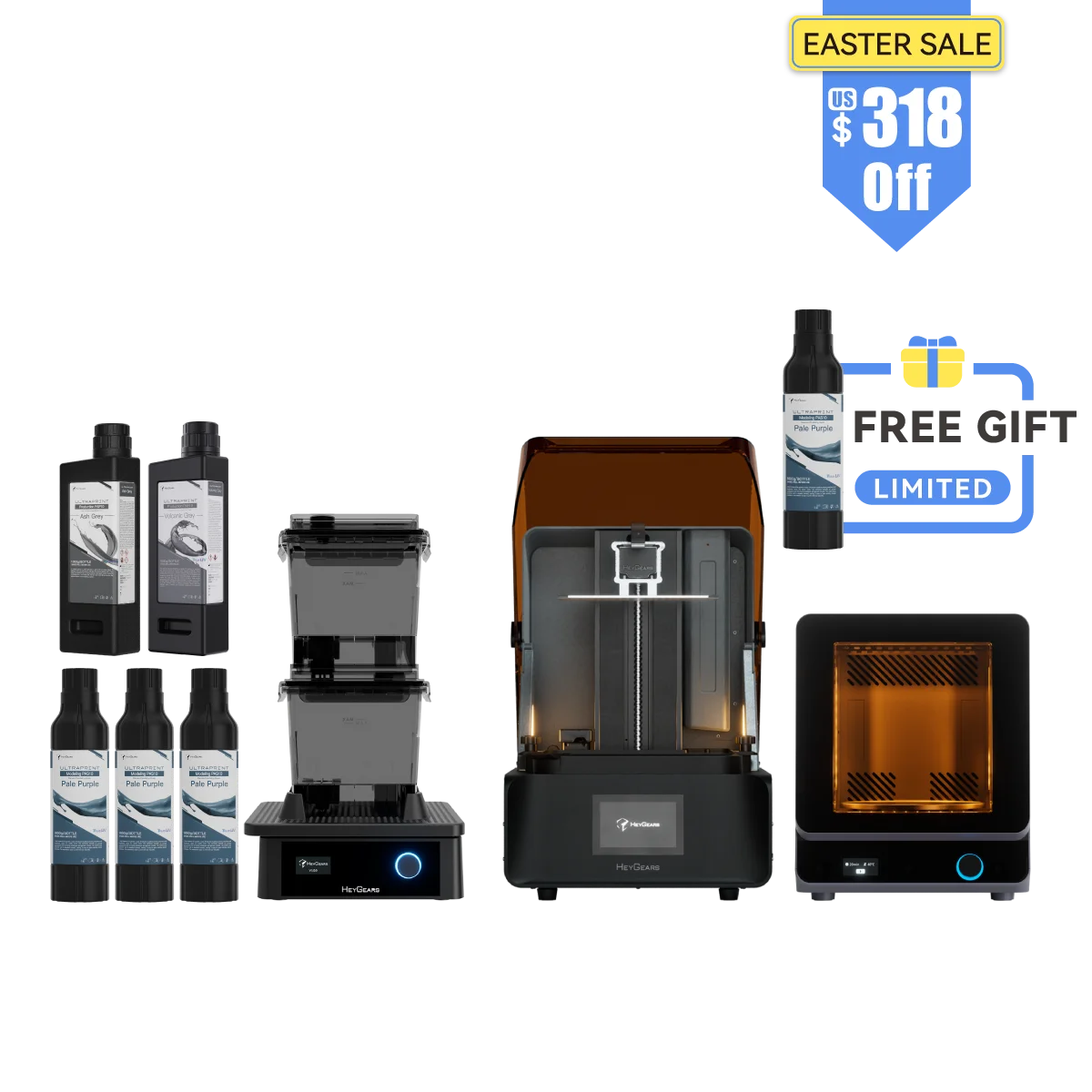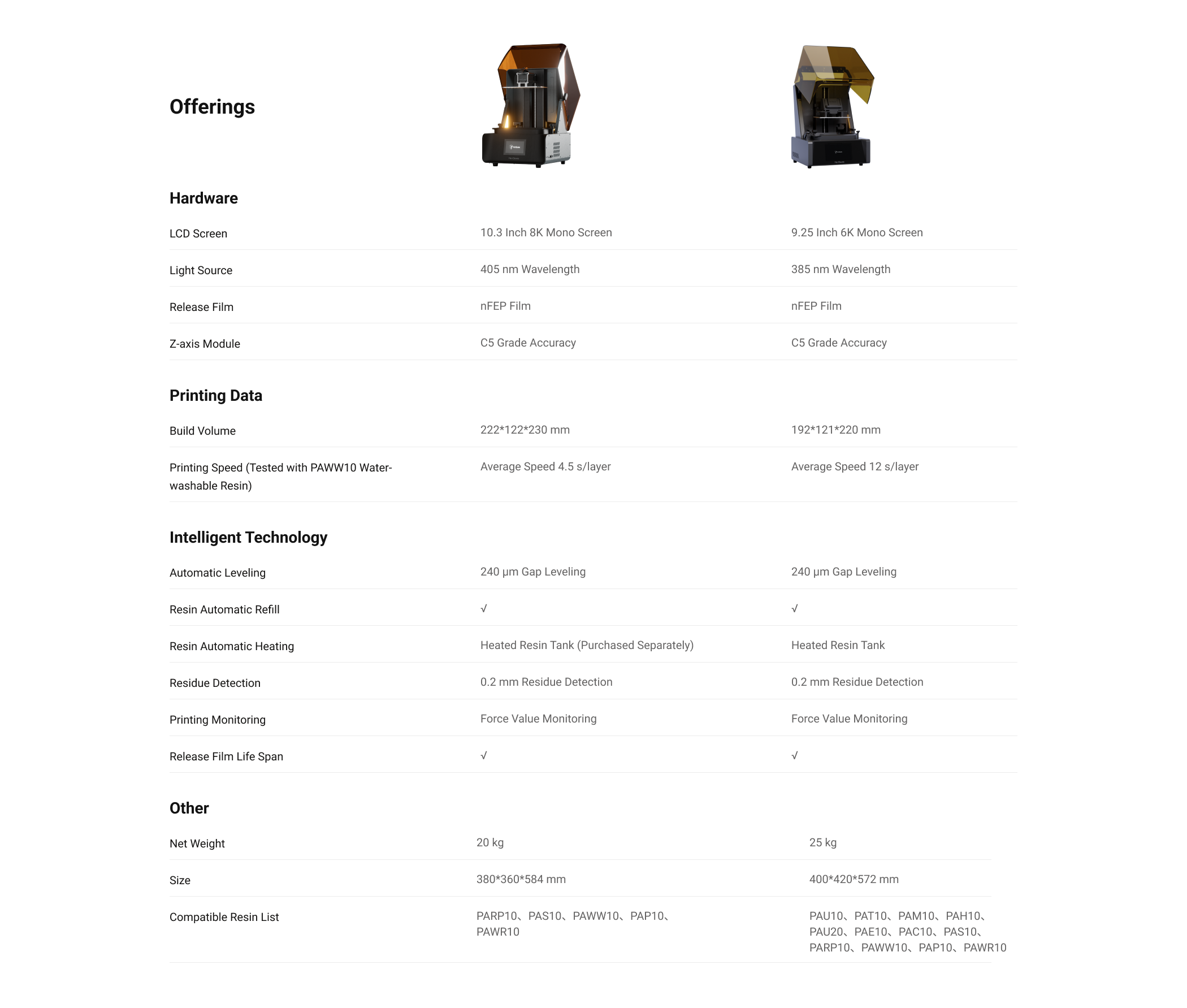
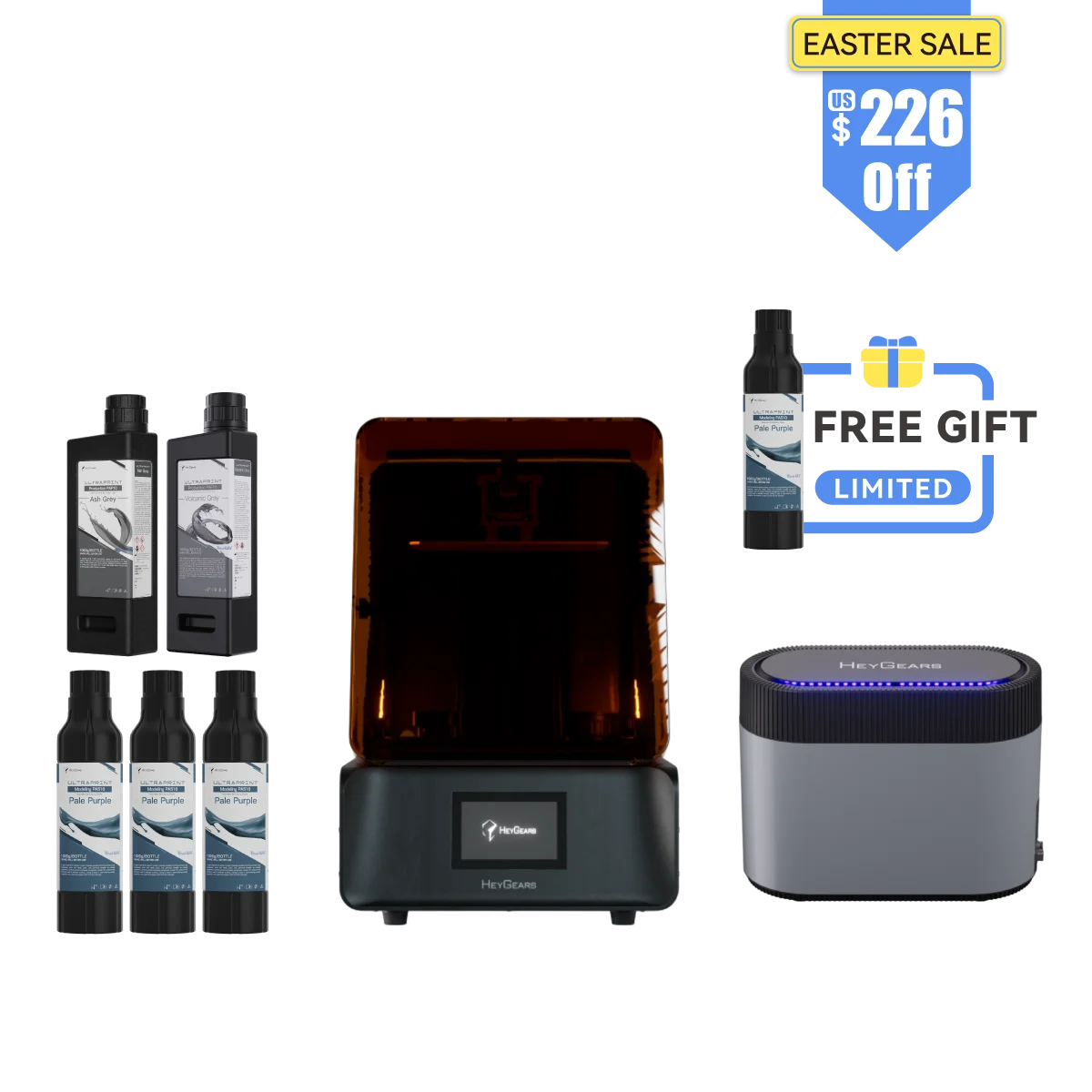
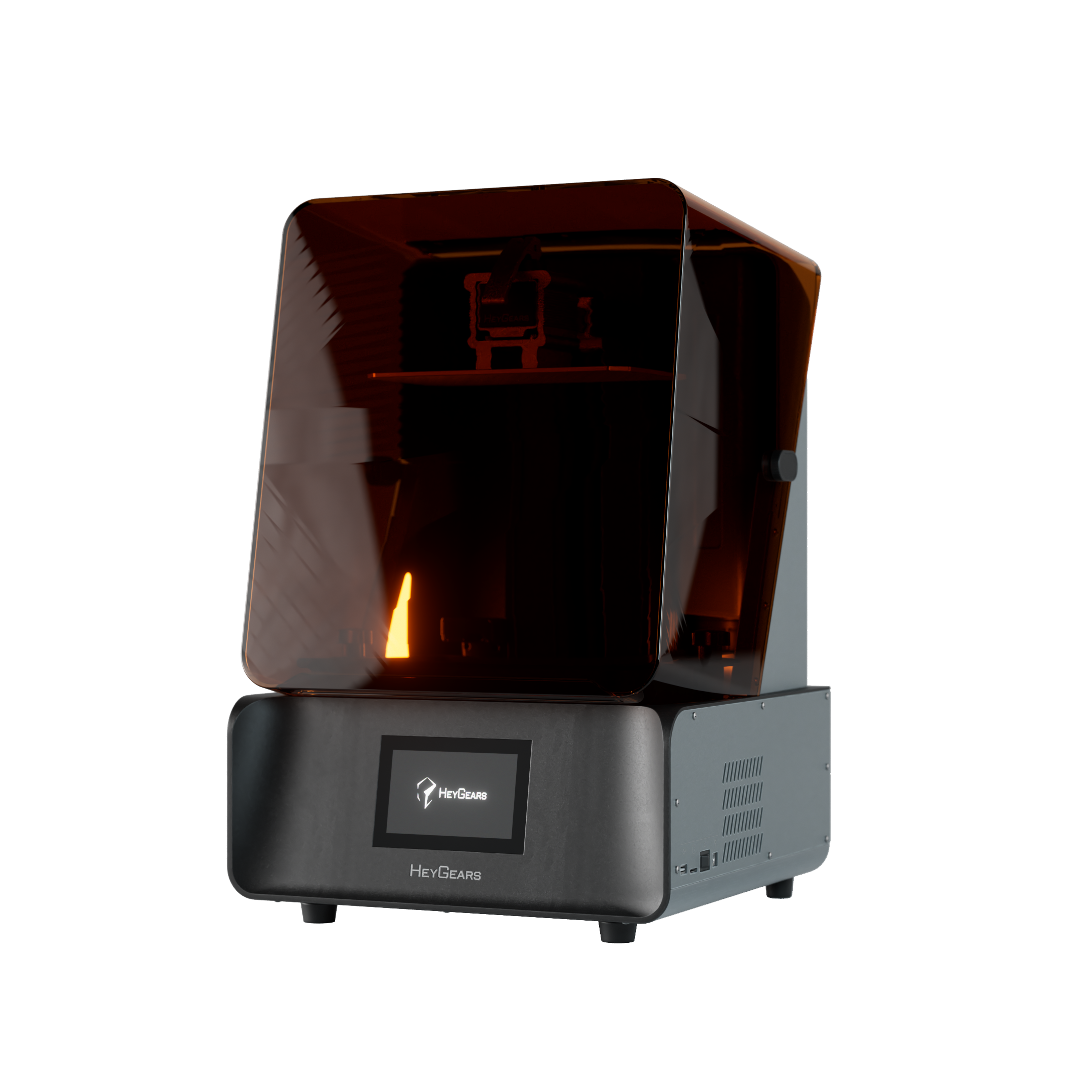
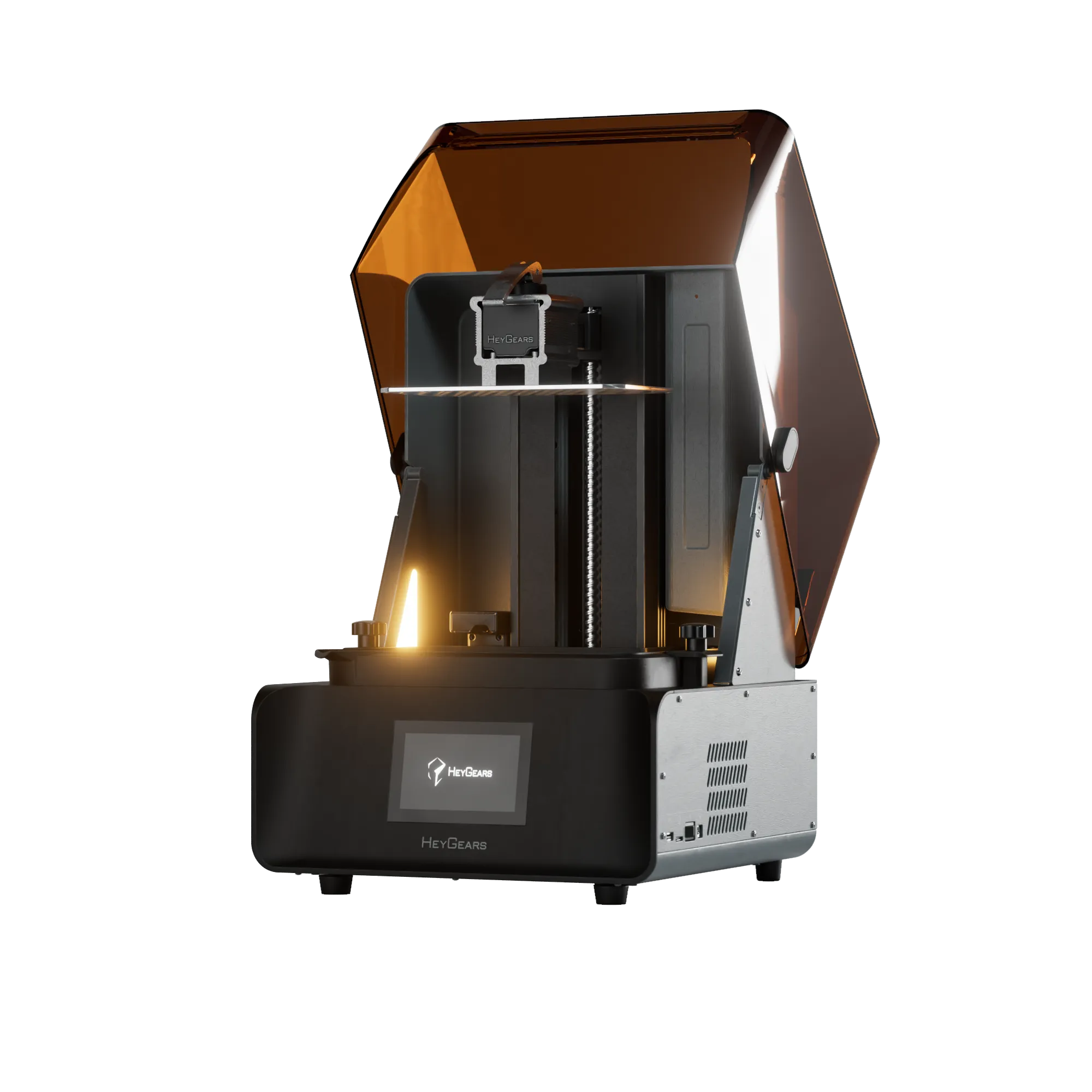
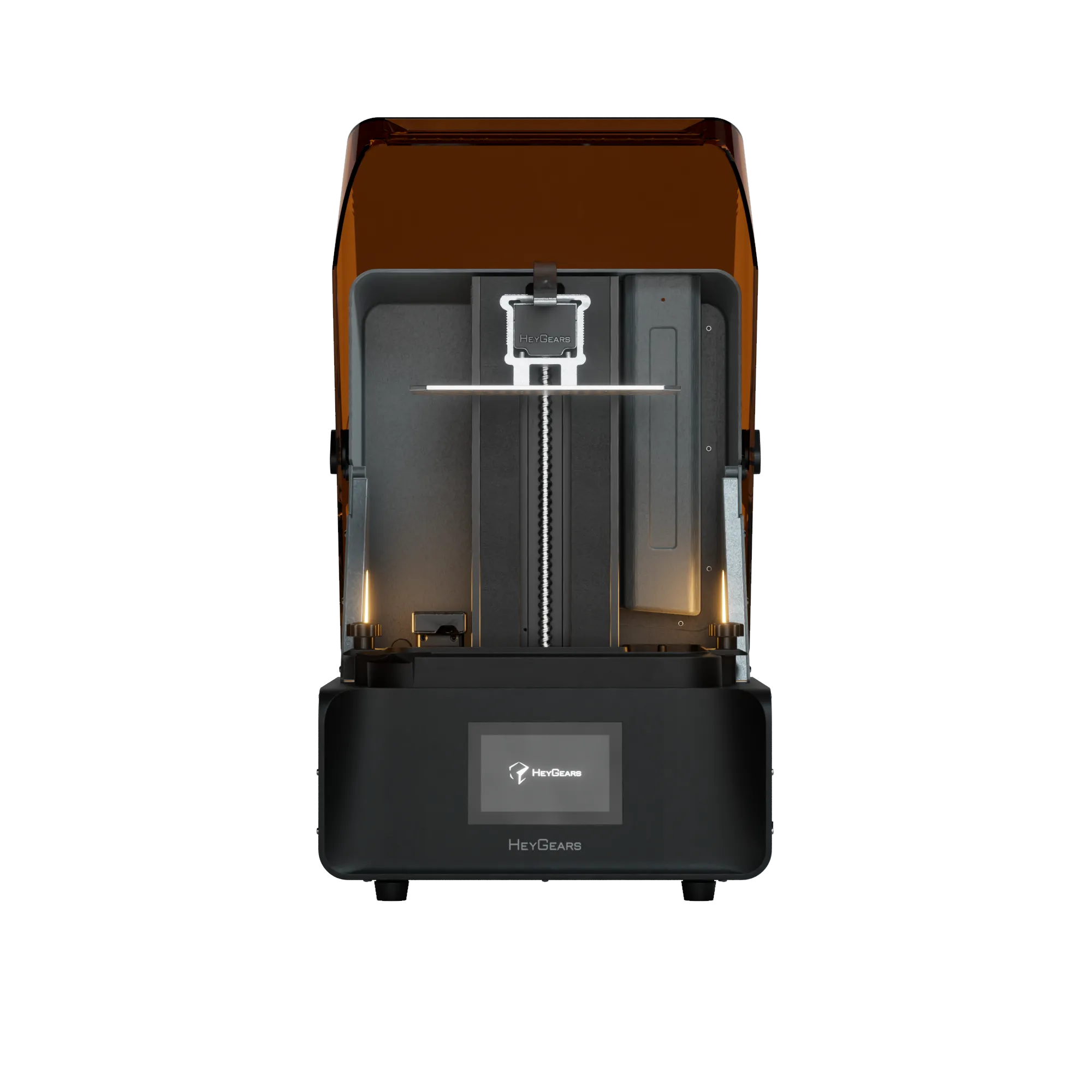




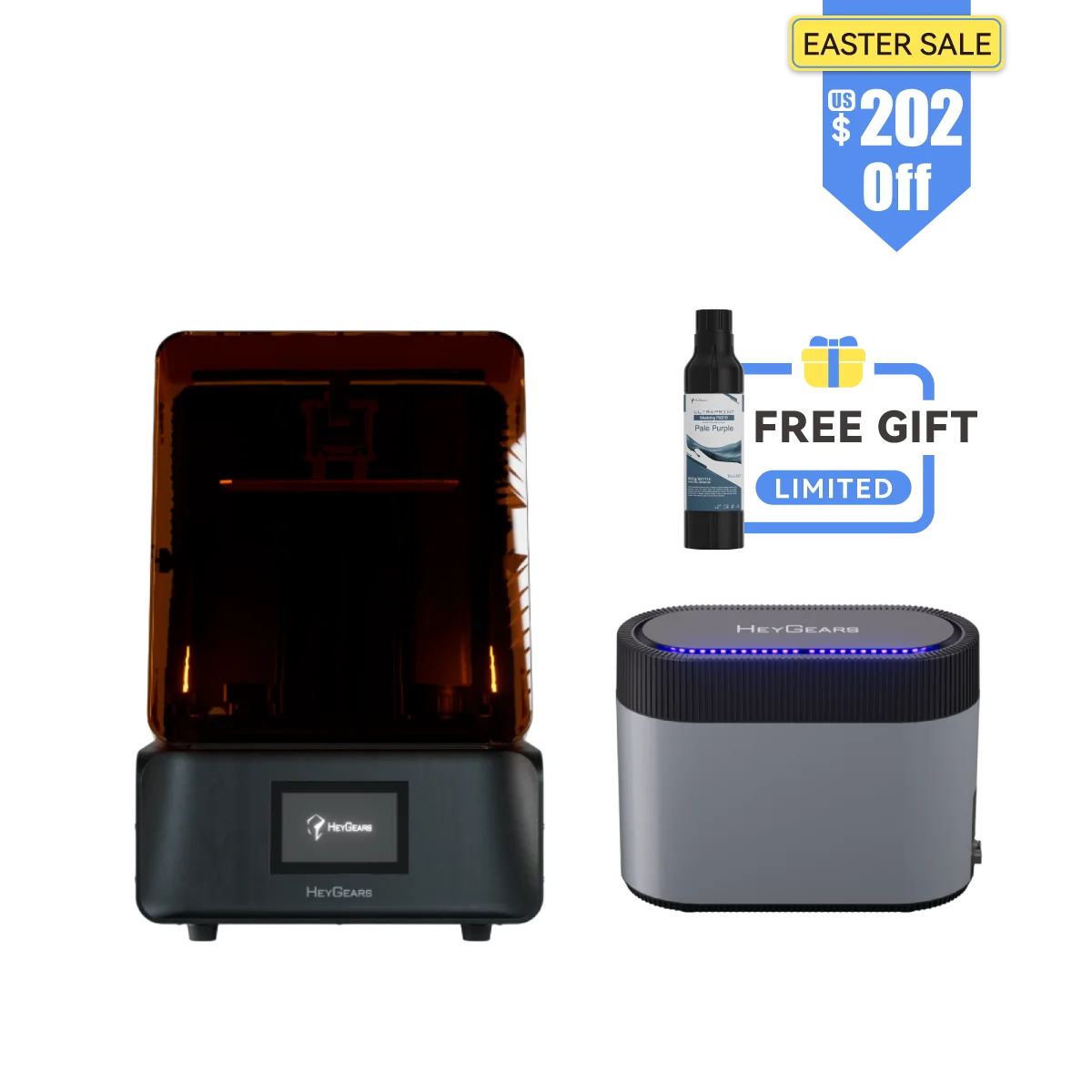




UltraCraft Reflex RS 3D Printer
The latest UltraCraft Reflex RS 3D printer is expertly designed for a seamless printing experience.
What is Miniature Maker Pro Resin Bundle?
Miniature Maker Resin Bundles include PAS10, PAP10, and PAF10 resins, designed to meet the 3D printing needs of tabletop miniatures from small figures and accessories to large terrain and sculpture models.
Miniature Maker Pro Resin Bundle:PAS10 Resin 1kg * 3+ PAF10 Resin 1kg + PAP10 Resin 1kg
Extra $30 off code: EASTER
Only 100 Codes Available to Save $30
Buy Now and Enjoy Free PAS10 Resin!(Ony 50)
Product Highlights
- C5 grade Z-axis module for stable layer thickness and clear details
- Full-field screen calibration for consistent high accuracy
- Dynamic Motion Algorithm 3.0 for speed increases up to 33%*
- Auto Assisted Printing:
- Floating Screen Auto Leveling
- Automatic Resin Refill
- Automatic Resin Heating**
*Data sourced from HeyGears Lab, utilizing PAWW10 water-washable resin, compared to conventional motion control 3D printing. The exact speed increase may vary based on model.
** with RS Heated & Pulsing Release Resin Tank (purchased seperately)
Package Includes
Reflex RS:
UltraCraft Reflex RS 3D Printer x1
Reflex RS with Pulsing Release Module :
UltraCraft Reflex RS 3D Printer x1
UltraCraft Pulsing Release Module x1
UltraCraft Reflex RS Heated & Pulsing Release Resin Tank x1
Pairs well with

UltraCraft Reflex RS 3D Printer
We're committed to providing you with the best service. Please don't hesitate to reach out if you have any questions.
-
Shipping Information
Free shipping on orders over $399. Click here for more shipping details.
-
Customer Support
Need assistance? We are here to help!
WhatsApp:
+1 949-283-2998(US)
Mon-Fri, 9AM-5PM PSTEmail Support:
contact@heygears.com
Technical Support:
customersupport@heygears.com
-
Get Started
Getting Started with Your HeyGears 3D Printer
-
FAQ’s
Please read our FAQs page to find out more.
-
Information
Share contact information, store details, and brand content with your customers.
Hear It From Our Users
Reliable C5 grade Z-axis Module
High repeat positioning accuracy ensures layer positioning errors are no more than 2 μm*. Tested with a 50 kg load across ten thousand runs.
Full-Field Precision Screen
Adaptive Z-axis Compensation
Dynamic Motion Algorithm 3.0, 33% Increase in Print Speed*
*Data sourced from HeyGears Lab, utilizing PAWW10 water-washable resin, comparedto conventional motion control 3D printing. The exact speed increase may vary based on model.
A Complete Production System
Specifications
3D Printing Technology:
– LCD (MSLA)
Build Volume:
– 222*122*230 mm
XY Native Pixel:
–29.7 μm
Accuracy:
– ±15 μm
Layer Thickness:
– 30-100 μm
Optical Wavelength:
– 405 nm
Size:
– 380*360*584 mm
Weight:
– 20 kg
Rated Power:
– 180 W
Voltage:
– 100-240 V~50/60 Hz
Size:
– 380*360*584 mm
Connectivity:
– USB/WIFI/LAN
Language:
– English, Simplified Chinese
Compatible Resin
PARP10、PAS10、PAWW10、PAP10、PAWR10
Included in the Box

Printer

Power Cord

Part Removal Tool

Resin Tank

Build Platform

Allen Wrench

Scraper
FAQs
Please read our FAQs page to find out more.
What is the optimal temperature for 3D printing?
It is recommended to maintain the resin temperature at 20-25°C during printing. This temperature range helps the resin to retain good flowability and curing characteristics, thereby ensuring the stability of the printing process and the quality of the final product.
Are the pulse modules of the Reflex RS the same as those of the Reflex? Can they be used interchangeably?
The pulse modules consist of a pulse main unit and a pulse resin tank. The pulse main units for the Reflex RS and Reflex are the same, but the pulse resin tank sizes are different and therefore not interchangeable.
Is it necessary to use RS in a ventilated environment?
It is recommended to use it in a well-ventilated environment, which helps with equipment cooling and is also beneficial for dispersing the smell of the resin.
Can the Reflex RS use third-party resins for printing?
To ensure the quality of prints and the stability of the equipment, it is recommended to use resins provided by the official source. Our resins have undergone rigorous testing to ensure they are perfectly matched with the printer's performance and software settings, resulting in high-quality prints.If you use resins from other brands, mismatched parameters may lead to risks such as print detachment, missing parts, residue, poor surface quality, low precision, and could even damage the equipment. Damage to the printer caused by third-party resins is not covered under warranty.
Can Reflex RS use third-party slicing software files for printing?
Currently, Reflex RS can only use the slicing files provided by BPS. This is to ensure print quality and printer compatibility. The official slicing software is professionally designed and optimized to intelligently adjust and set according to different models and materials, allowing users to easily print high-quality works. Using non-official slicing software may lead to printing failure or quality issues. Therefore, we recommend using the official slicing software for the best printing experience.



